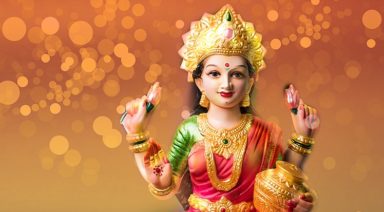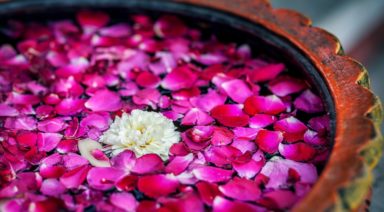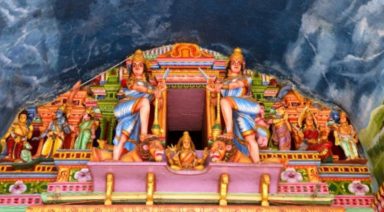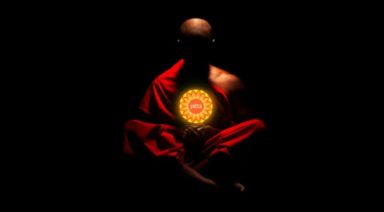Purifying Through Fire: Creating a Fire Ceremony
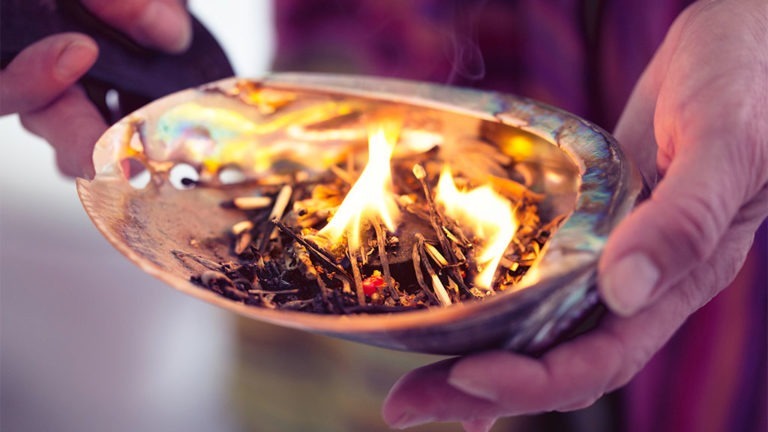
The ancient Vedic culture, from which yoga is derived, has a long-standing tradition of rituals designed to pay homage to and communicate with the divine. In a Puja ceremony, one makes simple offerings in gratitude for the blessings they have received and to return a piece of these gifts back to spirit. In a Yajna, the ritual is more extensive. Here Brahman or Vedic priests communicate with specific aspects of the divine through the messenger Agni, the fire God. Yajnas, as prescribed in the Vedas, follow a specific template which include intention, offerings, and specific mantras to be recited. The following article describes the basic tenants of Yajna and Puja to provide a template for practitioners to create their own fire ceremony of purification and transformation.
1. Begin in Fullness
A central tenant in yoga is the notion of “purnam” or wholeness. All that exists arises from wholeness and is in itself whole. It is essential in our communion with spirit to understand that we are not separate from and seeking union; instead we are unified and remembering.
Purnam exists throughout the entire life cycle; from the blessing of a newborn baby to the cremation grounds of Varanassi, the wholeness of life is acknowledged through its entirety. As an individual soul, or atman, we go through a journey of transformation as our life unravels to reveal new layers of understanding. Regardless of one’s disposition, place in life, failures or successes, each individual is of “purnam” and as such, divinely whole. The practice of purification serves to dissolve the illusion of separation and bring the aspirant back into their knowing of wholeness.
Application
As you prepare your body and mind for fire ceremony, do so from the intrinsic understanding that you are whole exactly as you are. Bring your whole self forward. Allow all parts of you, from the beautiful to unseemly, to open to the direction and guidance of spirit.
2. Clarity of Purpose
The potency of Yajna and Puja rituals is derived from their depth of intent and purpose. Refined over thousands of years, these practices imbue artful intention into every action. The ultimate purpose of Yajna is, as Sri Shri Ravi Shankar says is, “to bring only good to you and others… to purify our mind, our life, and our actions.” We practice to honor the divine and communicate our willingness to be guided by spirit.
Application
Through meditation or journaling, get really clear on your intention for this ceremony. What does it mean to truly bring good to yourself and others? Feel the vibration of your intention in your cells and allow the experience to imprint in your psyche. This intention will now permeate into all your preparations.
3. Offerings
Offerings in Puja and Yajna ceremonies are made to honor the divine. Seemingly simple gifts, such as rice, fruit, or flowers, communicate deep gratitude for the blessings one has received and the wish to share these back with the divine. Each offering is empowered by the understanding that every gift is offered to the wholeness from which we arise.
Application
Gather items that represent the gifts you have received. Bits of food, money, and flowers may represent your nourishment, comfortable life, and the beauty of your world. You could also make a different type of offering by writing a letter of gratitude or creating a piece of art. The more significant an offering is to you the more meaning it will carry in ceremony.
4. Invocation and Chanting
Recitation of mantra and invocation of the divine is standard in Vedic ceremony. The invocation connects to a specific deity, or universal consciousness, through sanskritmantras. Sanskrit is an ancient energetic language which contains 50 syllables, each connecting to an aspect of the energetic body. Recitation of specific mantra acts as a key to unlock or unveil the divine within. Just as a kind word can impact an individual, mantras have the power to create an energetic shift. What makes a mantra truly impactful is the presence and devotion of the aspirant.
Application
There are many ways to choose a mantra or prayer for ceremony. You can connect with a specific deity, universal consciousness, even an English prayer or affirmation. Feel into your purpose for this ceremony. Which method resonates with you?
Connecting with an aspect of the Divine
Choose a mantra based on a deity with whom you resonate. For example; Durga is a warrior goddess who contains all the virtues of masculine and feminine. She slays demons with strength and ferocity while remaining infinitely compassionate and releasing their karmic debt. A mantra for Durgais “Om Dum Durgayei Namaha.” Other deities and mantras include; Ganesh, the remover of obstacles “Om Gam Ganapataye Namaha”; Shiva, the destroyer of evil “Om Namah Shivaya”; and Saraswati, the goddess of music and wisdom, “Om aim Sarasawatyai Namaha.”
Use a Universal Mantra
- “Aum” an auspicious sound which contains the energy of the universe
- Gayatri mantra: this mantra is considered the “Mother of the Vedas”
- Mahamrityunjaya mantra: this mantra is often used for healing
- Purnamadah mantra: a mantra to connect us to the wholeness of all
Create your own Mantra
Think of a short prayer or affirmation that has real meaning to you and connects with your intention. This can be recited in song or speech during the ceremony.
5. The Messenger of Fire
Agni, the fire God, is considered a direct messenger to the spiritual realm. In the presence of Agni, our actions of arriving in wholeness, honoring the divine, and offering gifts of gratitude, are directly translated to spirit. Through this practice we purify the individual and collective consciousness.
Application
Prepare a place for the fire to burn. A clay pot, fireplace, outdoor firepit, or even a candle could be used. If you plan on placing your offerings into the fire be sure that your space is well ventilated and that all safety precautions have been taken. Prepare your space for ceremony. You will need your offerings, mantra preparations, a comfortable seat, a clean space, and something to start the fire with.
6. Executing your Fire Ceremony
With preparations complete, you are ready to begin your ceremony. Read the following list before you begin to keep the execution smooth.
- Light the fire and sit before it with eyes closed.
- Bring your whole self forward. In recognition of wholeness, bring all the pieces of yourself and your world forward as an offering to the divine. Become fully present in the moment.
- State your intention either aloud or internally.
- Make your offerings. As you place each offering into the fire connect to your gratitude.
- Recite your mantra aloud or in silence and open yourself to the wisdom of spirit. It is considered auspicious to repeat mantras in increments of 108. You can use a mala to help you keep count.
- Take time in silence. Gaze softly into the flames and allow the magic of Agni to penetrate your heart and spirit. This is a time to listen and purify. Allow thoughts and emotions to pass through you like clouds drifting across the sky as you remain present to the fire.
- Give yourself time; this practice can lend to a myriad of emotions from cathartic releases to feelings of distraction. Give yourself time to go through it all and offer all of it up to the flame
- End in gratitude. Thank the fire and universal consciousness for receiving you. Close by bowing before the flame in gratitude.
Rituals of the Vedic tradition offer methods for an aspirant to connect with the divine. Through Agni we may share our deepest intentions to the spirit realm and know ourselves and each other in wholeness. We honour this tradition by seeking deeper understanding of it’s tenants and practicing our own ceremonies with clear intent and a sincere wish to support the good of all.
Mantra Music for Ceremony
Why Does Your Mala Necklace Have 108 Beads?

From the yoga studio to a night on the town, people are donning mala bead necklaces around the globe. However, this trend is steeped in meaningful tradition and symbolism. Each mala necklace has 108 beads, and each bead evokes an energetic frequency based on its material, whether stone or seed.
What is the Significance of 108?
The number 108 has a range of significance across many different cultures and disciplines. For example, this number informs the architecture of sacred texts that are central to yoga and eastern philosophy. As a devoted scholar of yoga and tantra, Shiva Rea explains in Tending the Heart Fire, “there are 108 chapters of the Rig Veda, 108 Upanishads and 108 primary Tantras.” And these texts are written in Sanskrit, a language comprising 54 letters, each with a masculine (Shiva) and feminine (Shakti) form, 54 x 2 = 108. Listed below are just a few of the many relationships that carry this number.
Ayurveda and Other Religions
In in the field of Ayurveda, there are 108 sacred places, or marmas, in the body, identifying intersections of matter and consciousness. When manipulated, these points can awaken and align the vital energy. Members of the Vedic tradition see this number as denoting the wholeness of the universe: one represents the solar masculine, zero represents the lunar feminine and eight represents the infinite nature of all things. In the classic japa mala, used in Buddhism and Hinduism, there are 108 beads used for prayer and mantra.
Mathematics and Astronomy
Mathematicians favor the number 108 for its countless patterns and potential divisions. For example, it is divisible by the sum of its parts and most of its proper divisors, making it a semi-perfect number. Through the lens of astronomy, the diameter of the sun is approximately 108 times that of earth and the distance from our planet to its solar star is, on average, 108 times the diameter of the sun. A similar parallel relationship also exists between the earth and the moon.

What is a Mala?
A mala, meaning garland in Sanskrit, evokes a circular, continuous form. In practice, a mala is the devoted offering of repeated cycles (typically in divisors of 108) of mantra japa or yoga asana. Within a mala, there is always a sense of beginning, continuing and completion. Both inside each individual cycle and in the practice as a whole. This three-form (trimurti) quality allows us to embody, in practice, the rhythmic cycles ever-present in the natural universe: creation (srishti), sustaining (sthiti) and destruction (samhara).









